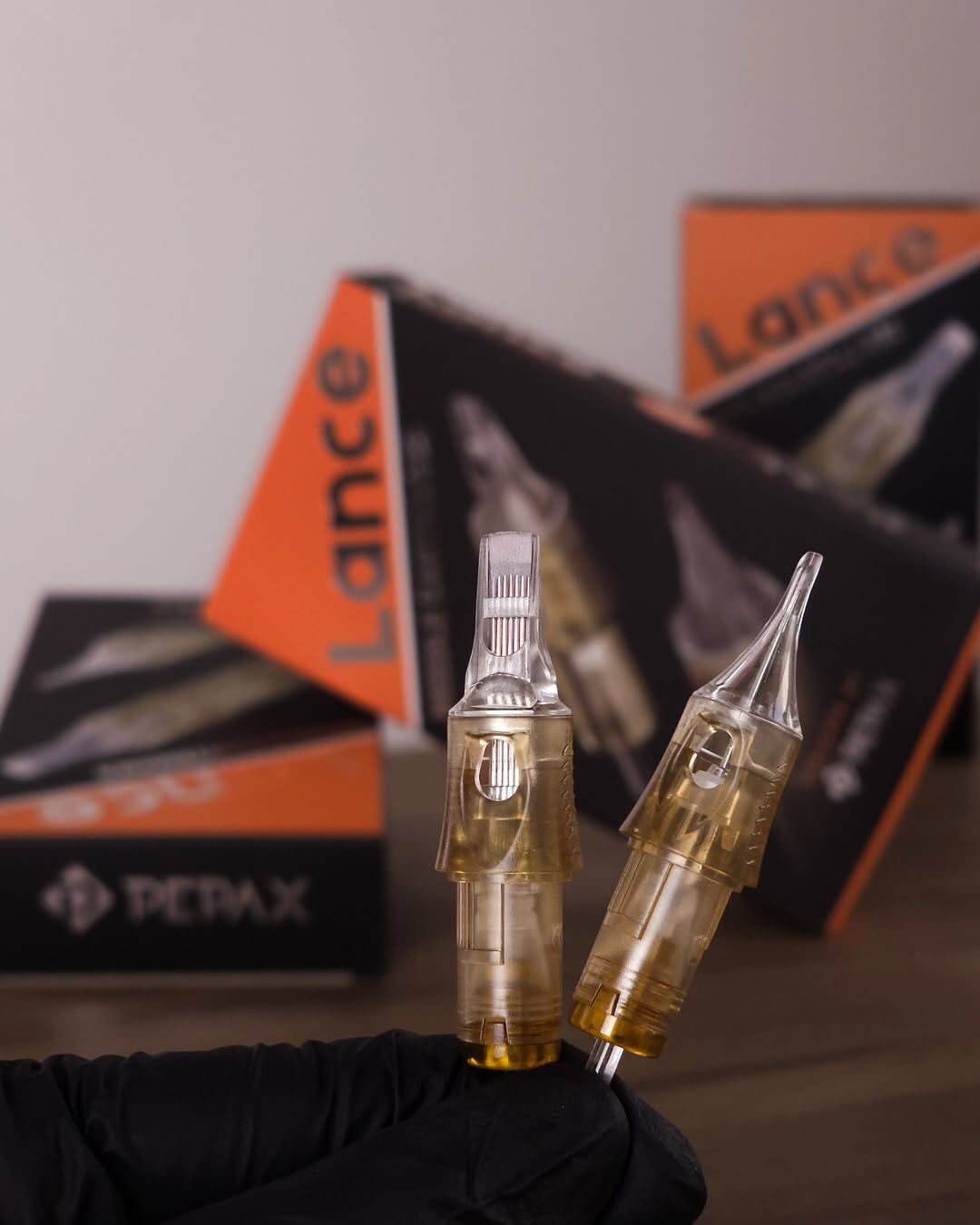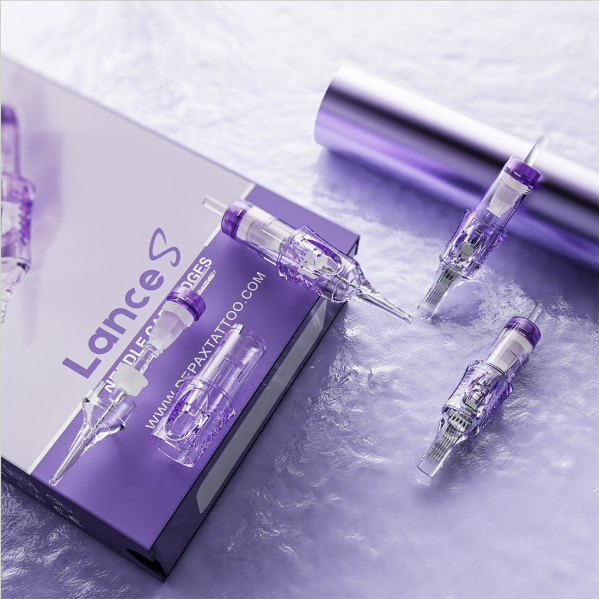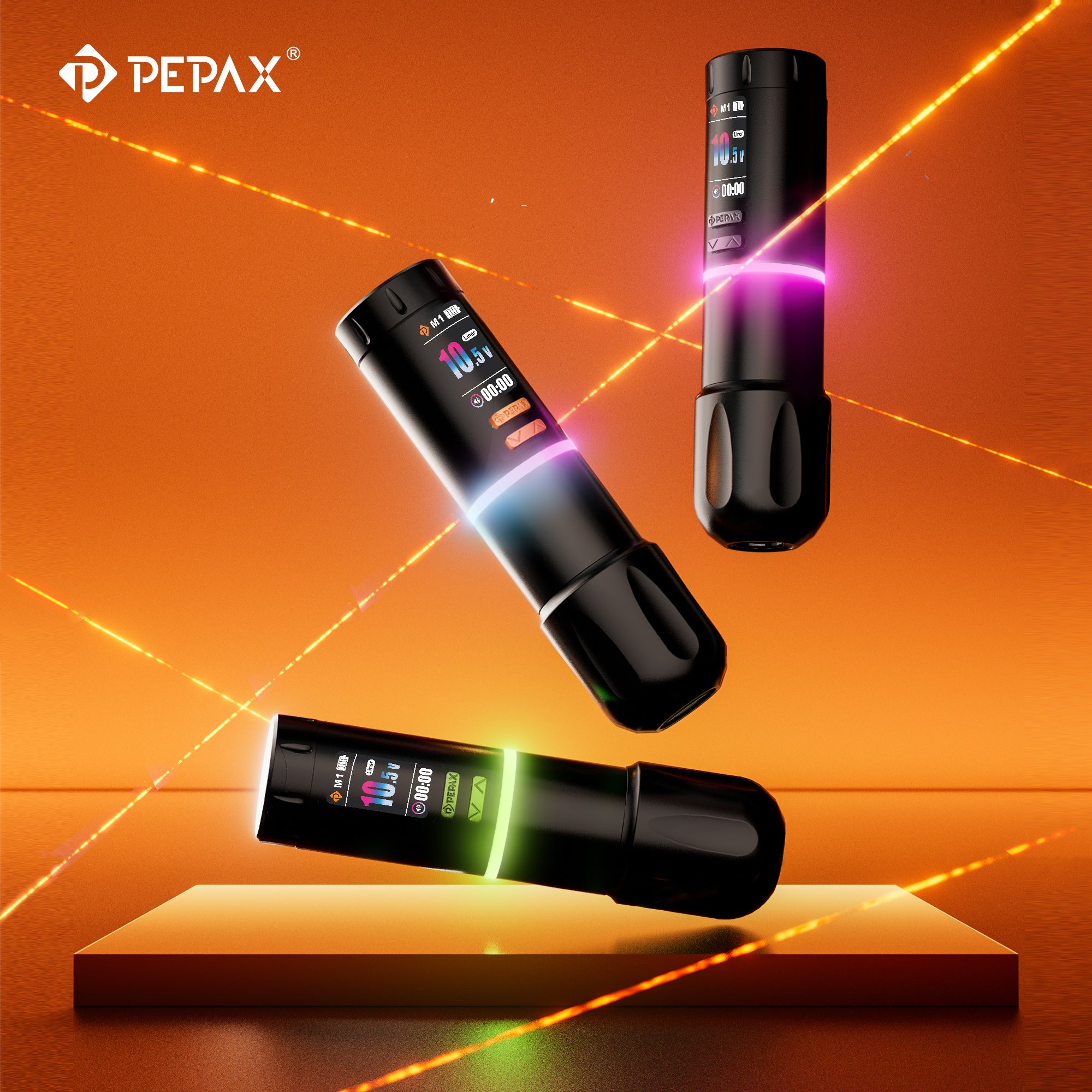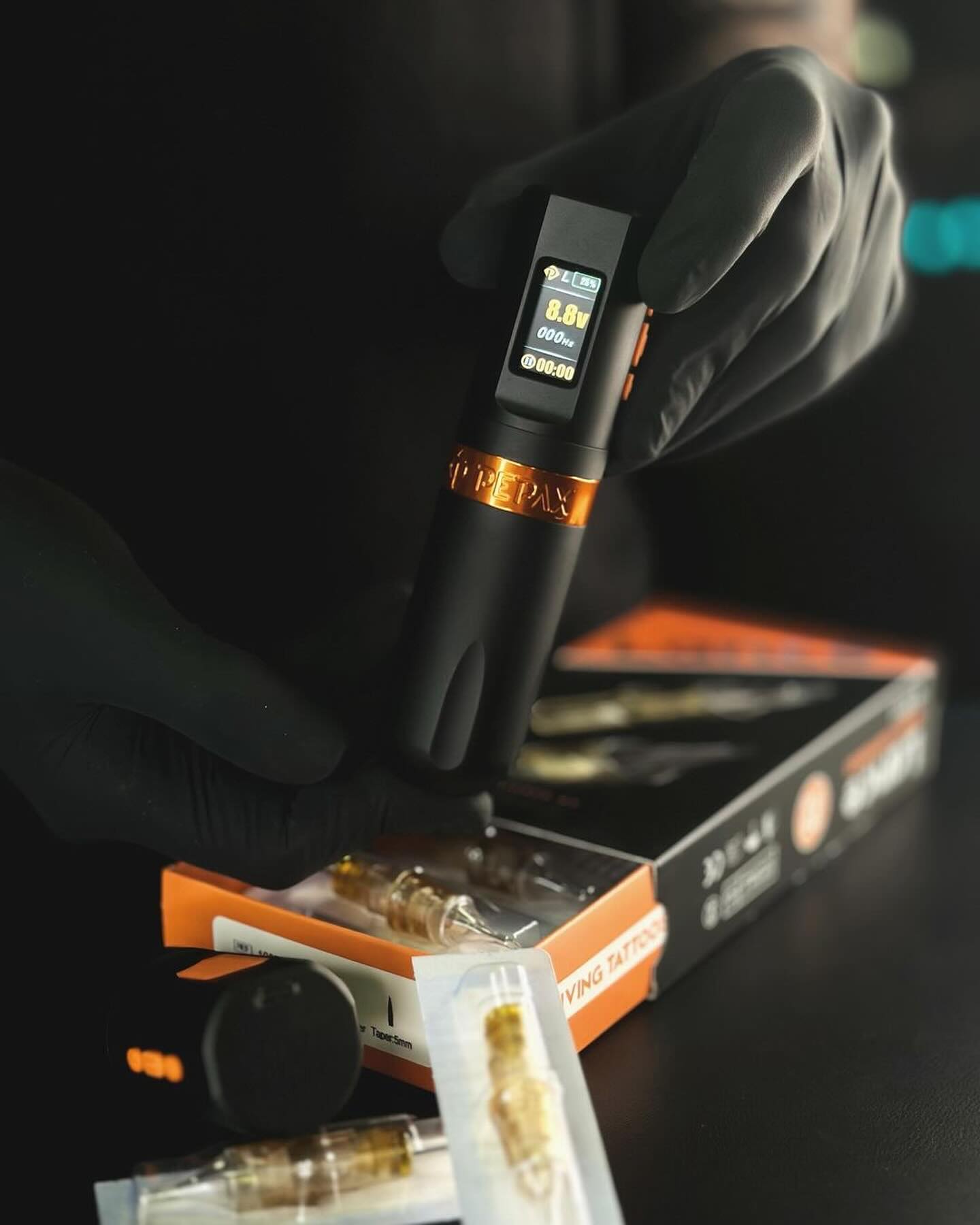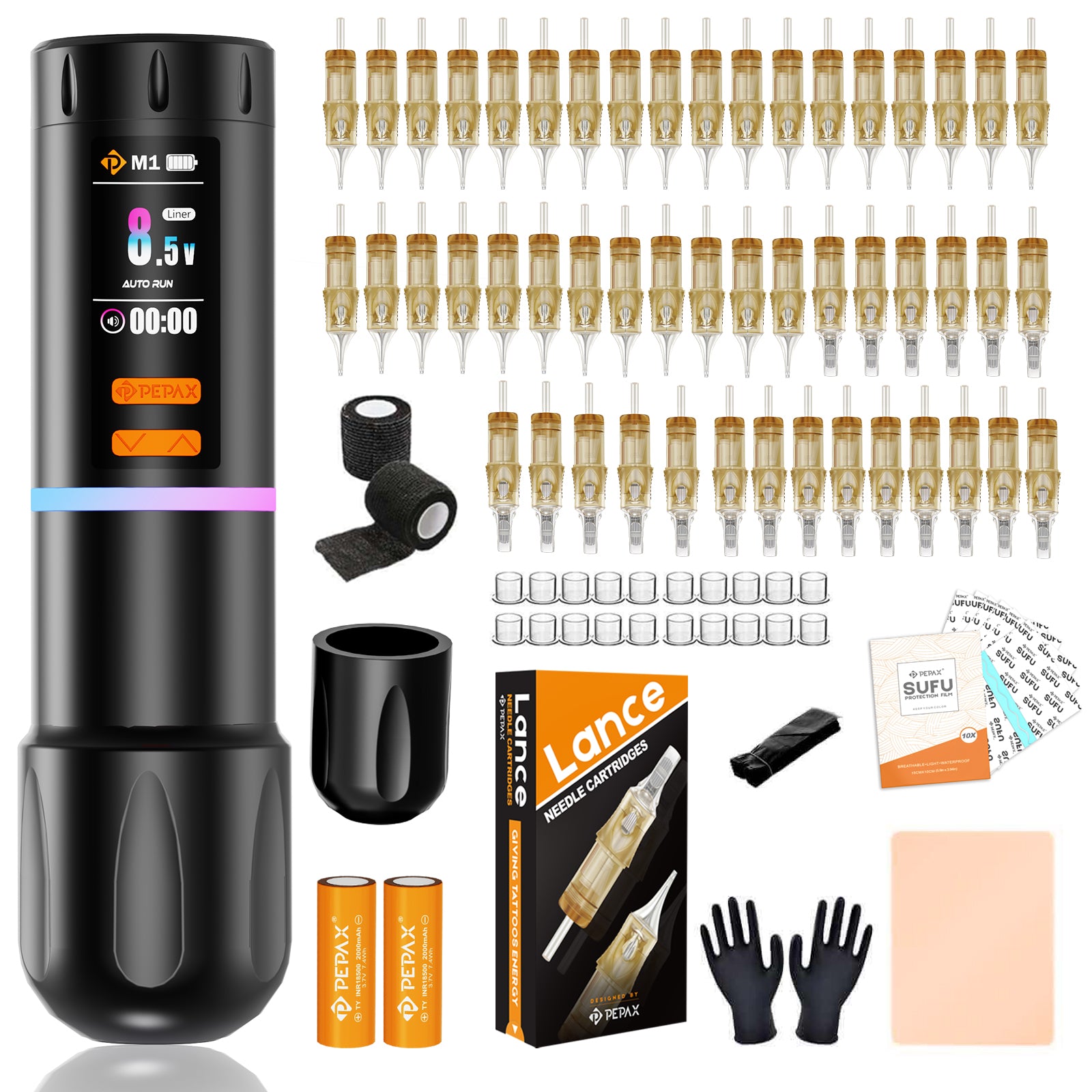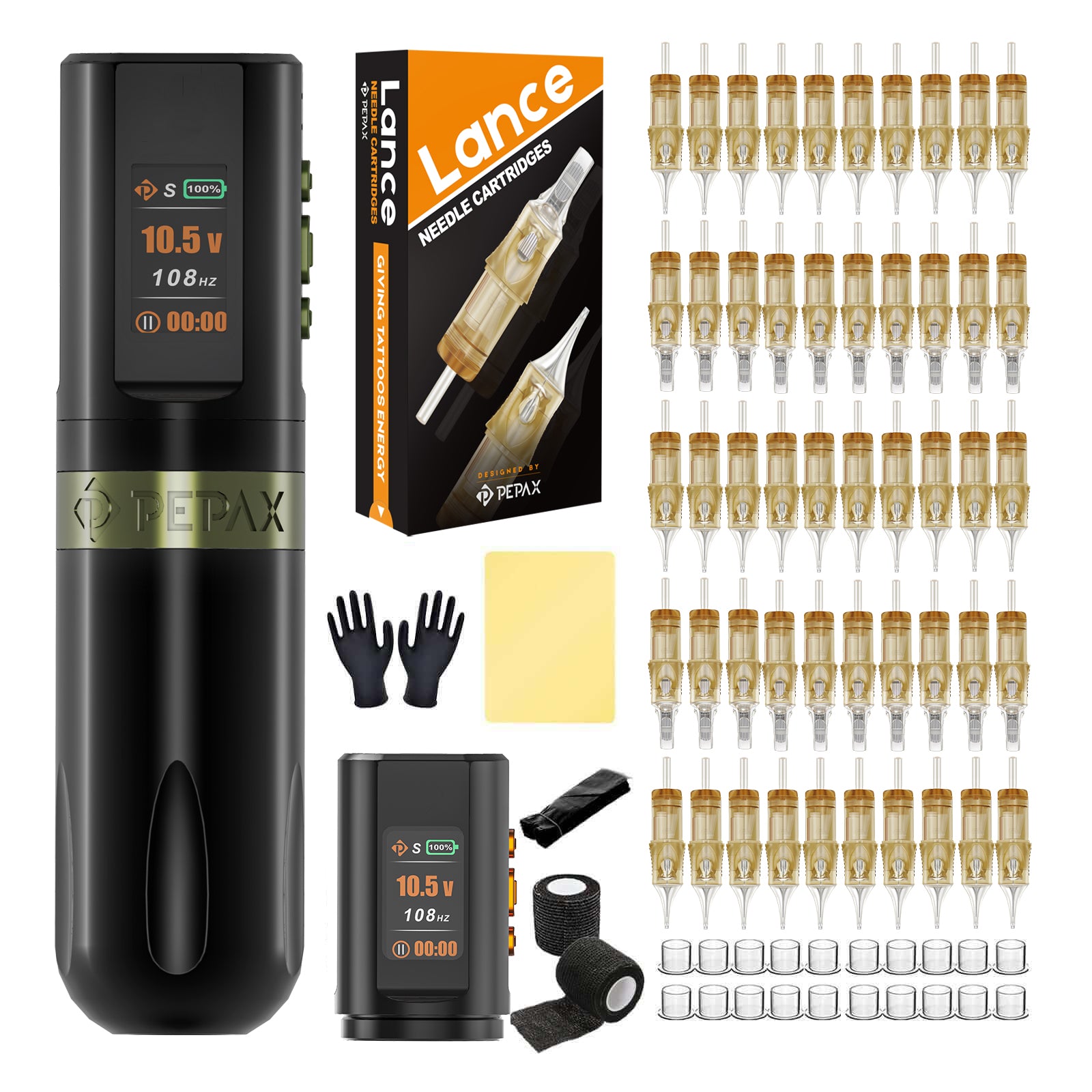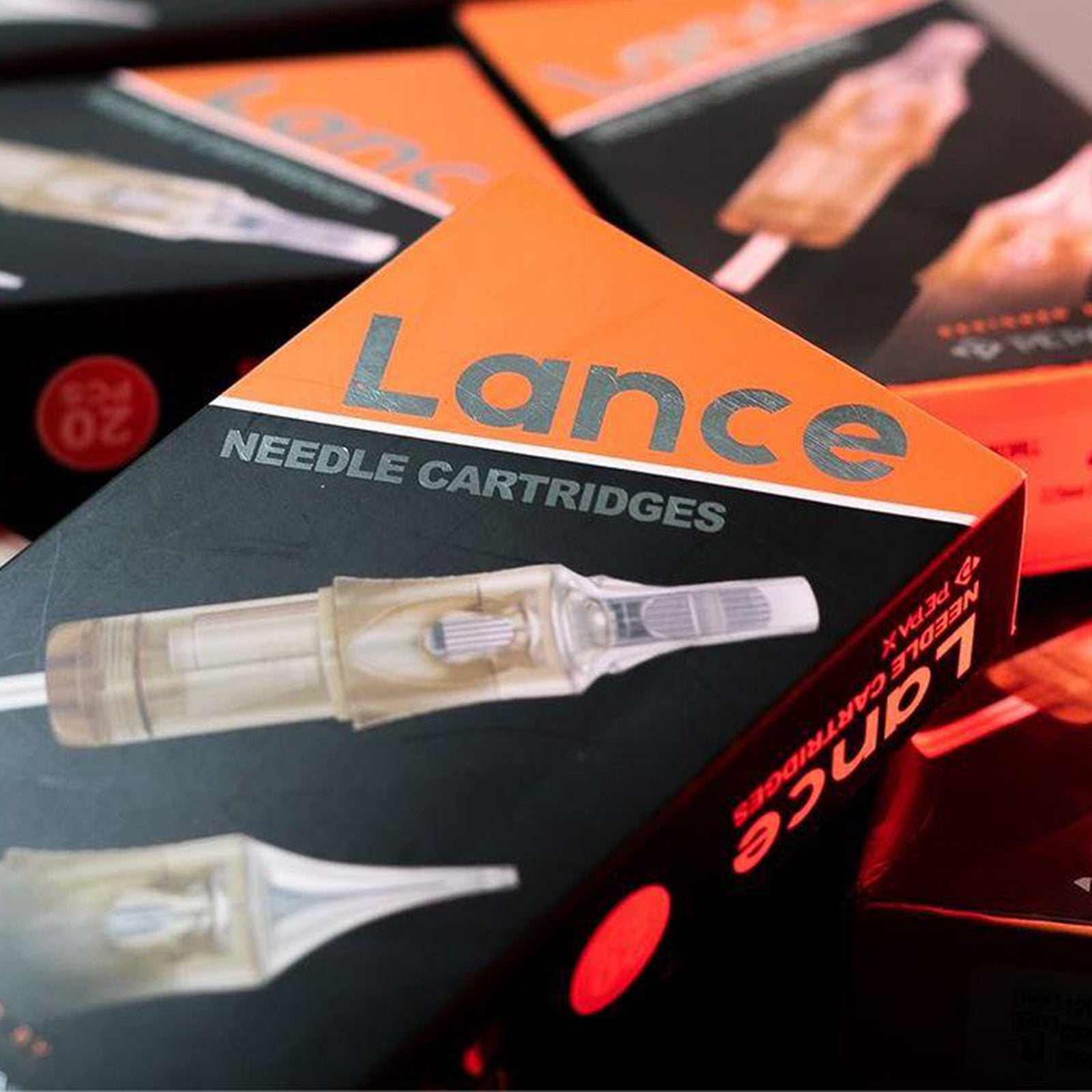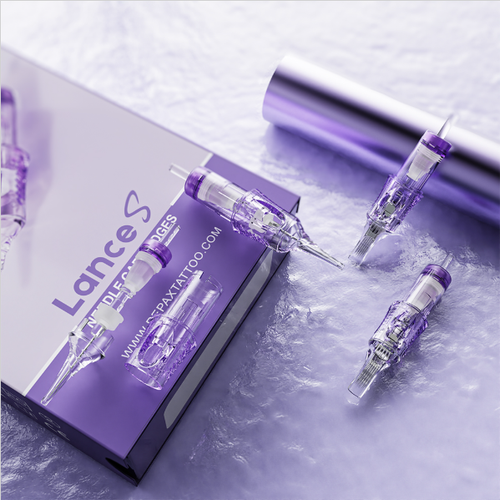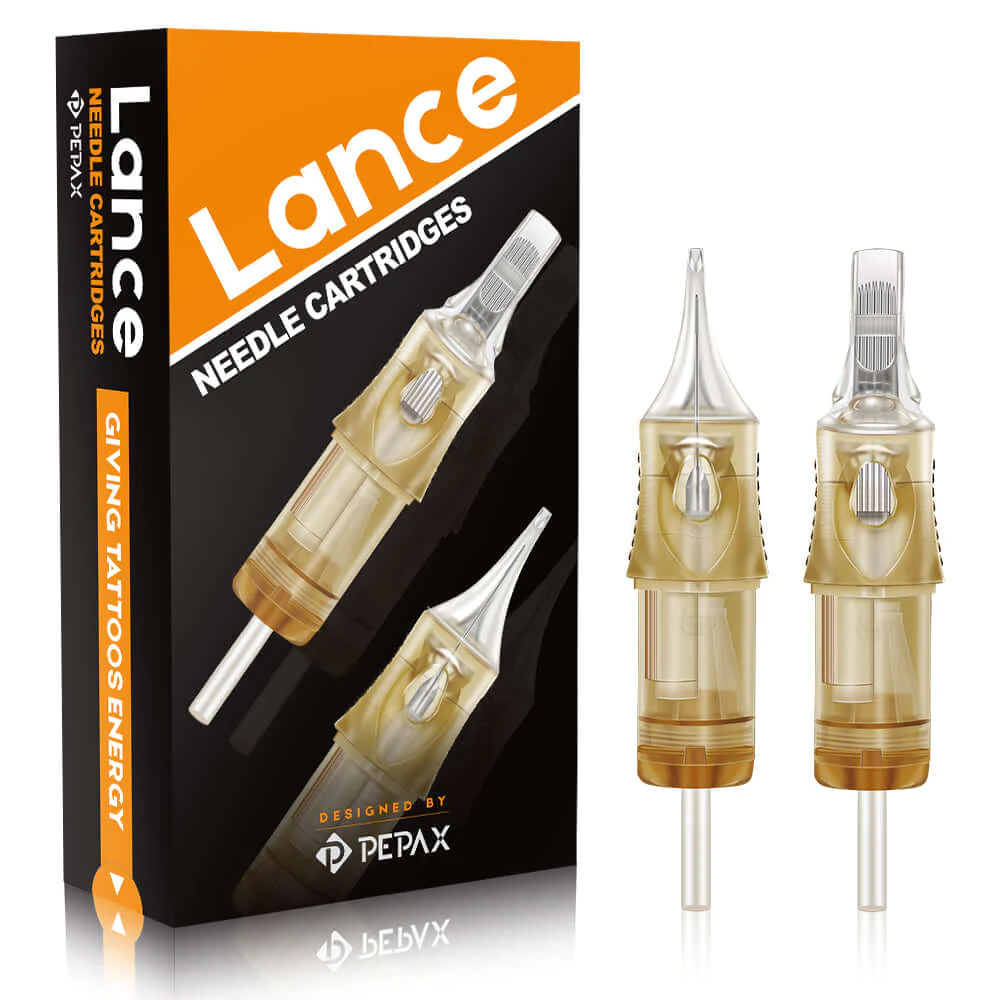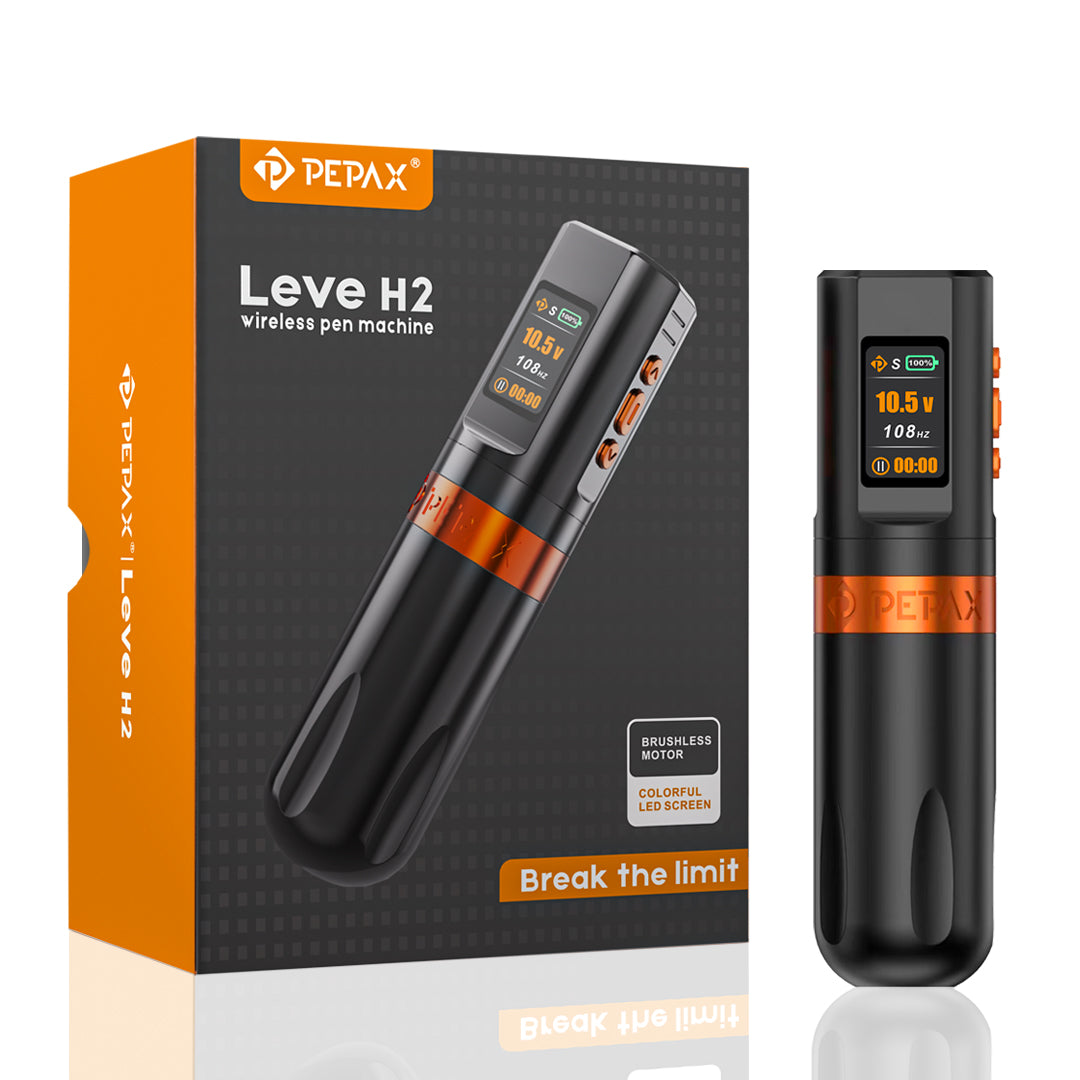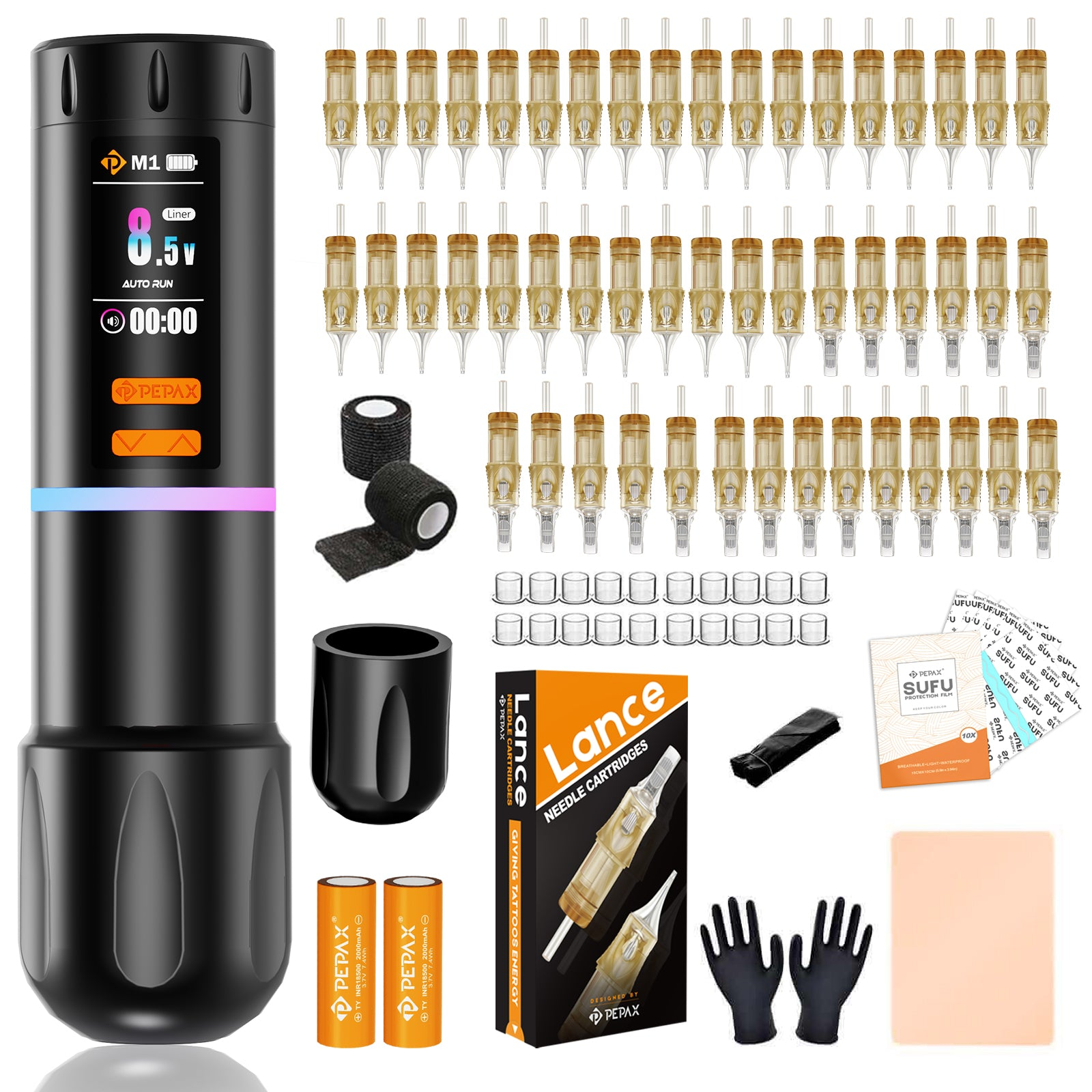What voltage should I adjust the tattoo machine to?
Tattooing, as an ancient art form, is still highly sought after in modern society. The tattoo machine, as a tool to realize this artistic creation, its voltage setting has a crucial impact on the tattoo effect. In this article, we will discuss in detail the definition of tattoo machine voltage, the impact of voltage on the tattoo, the choice of voltage considerations and different tattoo techniques applicable to the voltage and other aspects.
1. What is the tattoo machine voltage?
Tattoo machine voltage is the value of the power supply received by the tattoo machine at work. Tattoo machine through the electromagnet to produce vibration power, driving the needle in the skin puncture to form stripes, to achieve the purpose of tattooing. This process, the voltage of the tattoo machine determines the frequency and amplitude of the vibration of the tattoo needle, thus affecting the depth and effect of the tattoo. Tattoo machine voltage is generally between 6-12V, but the specific value will be adjusted according to the tattoo machine model, brand and tattoo artist needs.

2. The tattoo machine voltage how to affect the tattoo?
Tattoo machine voltage on the tattoo effect has a direct and significant impact.
1) Depth: the level of voltage determines the vibration frequency and amplitude of the tattoo machine, which in turn affects the depth and strength of the needle piercing. Generally speaking, the higher the voltage, the greater the vibration frequency and amplitude of the tattoo machine, the greater the depth and strength of the needle piercing, the tattoo effect will be more obvious and profound.
2) Lines and colors: Higher voltage is more suitable for fast, thick line tattoos, while lower voltage is more suitable for delicate, gradient color fills.
3) Skin healing: too high a voltage can easily lead to overstimulation of the skin, causing adverse reactions such as pain and swelling, and increasing the risk of infection; too low a voltage may result in a less noticeable tattoo effect.
Choosing the correct voltage is critical for all aspects of tattooing, including shading, lining and color filling, and can affect the quality of the finished tattoo and the healing process.
3. What do I need to consider when choosing the voltage?
In the choice of tattoo machine voltage, need to consider a number of factors to ensure that the best tattoo effect.
1) Tattoo parts: different parts of the skin tissue density and angle is different, need to adjust the voltage according to the actual situation. For example, in the thinner skin, more blood vessels in the parts, such as wrists, ankles, etc., need to choose a lower voltage to avoid damage to the skin. And the harder skin parts can withstand higher voltage.
2) Needle type: Needles made of different materials have different voltage requirements. Generally speaking, delicate and sharp needles require lower voltage to avoid excessive damage to the skin; while thick and blunt needles require higher voltage to ensure sufficient penetration depth and strength.
3) Machine type: Rotary machines differ from coil machines. Generally speaking, rotary machines perform better at lower voltages than coil machines.
Pen tattoo machines perform especially well at low voltages because they are designed with attention to detail and delicate tattoos. Pen tattoo machines typically require a specific voltage range to balance speed and precision without over traumatizing the skin. Modern pen tattoo machines are also usually equipped with high quality voltage regulators to ensure voltage stability and accuracy. The tattoo needle vibrates more gently and steadily, which ensures detail and clarity. In addition, the lightweight design of pen tattoo machines makes them more suitable for long, detailed tattooing jobs. Tattoo artists can more easily carry and transport the pen tattoo machine for outdoor or remote tattoo work.
4)Type of Work: Lining, shading and coloring have different voltage requirements. See the voltage range chart as a starting point and adjust to the details of your job.
5)Tattooist Experience: The experience level of the tattooist is also an important factor to consider when choosing a voltage. Experienced tattoo artists are able to flexibly adjust the voltage based on their experience and feel to achieve the best tattoo results.

4. How much voltage is suitable for different tattoo techniques?
Different tattoo techniques require different voltages. Below are the general voltages for common tattoo techniques:
- Lining: 7.5 - 9V
- Shade: 6 - 8V
- Color: 7 - 9V
Please note that these are general guidelines only. Ideal voltages may vary depending on the type of machine, needle settings and individual technique
1) Lining: Lining is the line part of the tattoo that requires precision and consistency. For this technique, a higher voltage (7.5-9V) is usually used to ensure that the needle penetrates quickly and extracts cleanly, creating a clear and consistent line.
2) Shading: Shading requires a softer touch to avoid over-saturation and skin trauma. Reducing the speed of the machine will help you get some smooth shading and make sure everything is consistent. Therefore, for this technique, a lower voltage (6-8V) is usually used to allow the ink to gradually build up and create smooth gradients and subtle transitions.
3) Color: This is the large solid color portion of the tattoo. For this technique, a moderate voltage (7-9V) needs to be selected to ensure that the artist can effectively fill the area with color and control the distribution of the ink while minimizing skin damage.

5. How to adjust the tattoo machine voltage?
1) Know the machine: First of all, know the voltage adjustment range and recommended voltage value of the tattoo machine used.
2) Observe the skin: Observe the customer's skin type, thickness and sensitivity, as well as the characteristics of the tattooed part.
3) Initial Setting: Initially set an appropriate voltage value based on the type of tattoo work and the type of needle. Once you are more familiar with the machine, you will be able to distinguish the voltage by the sound of the machine. However, if you are new to tattooing, we recommend sticking with 8 volts until you get used to the faster hand speed.
4) Gradual Adjustment: A good way to tell if you need to increase the voltage is to see if the lines are clear. If the depth of the tattoo is correct, but the lines don't look crisp enough, the hand speed may be too fast for the voltage being used. You can either slow down the hand speed or try running the machine at a higher voltage to match the hand speed.
5) Keep it coordinated: Pay attention to the texture and color variations of the skin and make sure that the voltage is coordinated with the tattoo speed, needle pressure, and other parameters to get the best tattoo results.
Once you find the sweet spot of hand speed and voltage, your tattoo will look clear and will heal perfectly.

Notes:
You need to master the basics before running the machine at higher voltages, otherwise you will face a higher risk of biting through the skin. This is why it's best to practice tattooing on fake skin. Because even if you tear the skin, there will be no long-term damage to the real client.
To summarize, the voltage of the tattoo machine is one of the key factors affecting the effectiveness of the tattoo. When choosing the voltage, you need to consider a number of factors such as the tattoo area, needle type, machine type, tattooing technique, and the tattoo artist's experience level. Also, different tattooing techniques require different voltages. Therefore, when creating a tattoo, the tattoo artist needs to flexibly adjust the voltage according to the actual situation to ensure that the best tattoo results are achieved.

